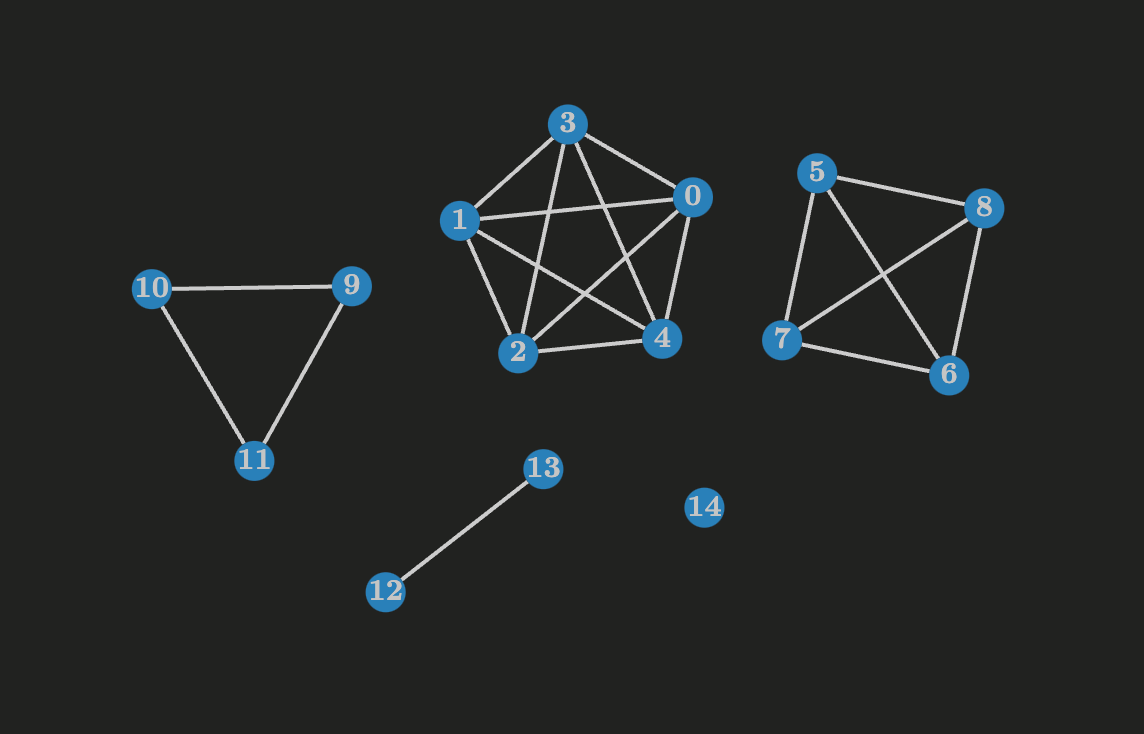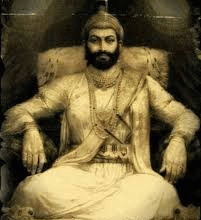Introduction
Graph theory is a neat way to study connections. It looks at points and the lines that link them. Those points are called nodes or vertices. The lines are called edges. This guide will walk you through graph theory step by step. I aim to keep things simple and clear. Sentences are short. Ideas are plain. The goal is to help you understand and use graph ideas. You will see simple examples from maps, social networks, and puzzles. You will also get tips to learn faster. This introduction sets the scene for more topics ahead. Read on and try small examples as you go. Practice makes the ideas stick.
What is Graph Theory?
Graph theory studies how things connect to each other. It uses vertices and edges to show relationships. A vertex is a single item or point. An edge is a link between two points. Graph theory helps answer questions about connections. For example: can you travel from one point to another? How many steps will it take? Is the network split into parts? Graph theory gives tools for these questions. It applies to many subjects like maps, computers, and biology. The core idea stays simple: study points and their links. With small steps you can learn big ideas. Start with a tiny graph on paper. Draw three dots and connect some. You already practiced graph theory.
Basic Parts: Nodes and Edges
Nodes are the objects in a graph. They can be people, cities, or web pages. Edges are the connections between nodes. An edge can be one-way or two-way. A one-way edge is called a directed edge. A two-way edge is called undirected. Edges can also have weights. A weight might show distance or cost. For example, a road can have a travel time as weight. Graph drawings make it easy to see structure. Labels help tell nodes apart. Adjacency means which nodes touch each other. Degree means how many edges meet a node. These basic parts build every graph idea you will meet.
Types of Graphs
Graphs come in many types and shapes. An undirected graph has two-way edges. A directed graph has arrows for edges. A weighted graph gives a number to each edge. A simple graph has no loops and no repeated edges. A multigraph can have repeated edges. A bipartite graph splits nodes into two groups. Each edge goes between the groups. A complete graph connects every node to every other node. A sparse graph has few edges. A dense graph has many edges. Trees are special graphs with no cycles. Planar graphs can be drawn without edge crossings. Knowing types helps pick the right tools for a problem.
Key Concepts: Paths, Cycles, and Degree
A path is a sequence of edges that connects nodes. Paths can be short or very long. A simple path does not repeat nodes. A cycle starts and ends at the same node. Cycles can show loops in networks. Degree counts how many edges touch a node. In directed graphs, we split degree into in-degree and out-degree. In-degree counts incoming edges. Out-degree counts outgoing edges. Connectivity tells us if every node can reach every other node. Components are separate connected parts. If a graph is connected, it has one component. These ideas help answer reachability and loop questions. Practice by tracing paths on small drawings.
Trees and Forests
A tree is a special graph with no cycles. A tree connects nodes with the smallest number of edges. For n nodes, a tree has exactly n minus one edges. Trees show hierarchical relations like family trees or file folders. A forest is a collection of trees. Spanning trees are trees that reach every node in a graph. They pick a subset of edges to connect all nodes. Many algorithms use spanning trees for networks. Trees are easy to search and traverse. They help when you want the least complex connection that still links all nodes. Try drawing a tree for your school’s subject list.
Graph Representations
We can store graphs in two main ways. One way is the adjacency list. Each node keeps a list of neighbors. This is great for sparse graphs. The other way is the adjacency matrix. It is a grid of rows and columns. A cell says if two nodes are linked. The matrix works well for dense graphs. Weighted edges store numbers in the matrix or list. For directed graphs, the matrix can be asymmetric. Representation affects memory and speed. Choose the right form for your task. For big networks, adjacency lists often save space. For quick checks between pairs, a matrix can be faster.
Graph Algorithms Everyone Should Know
Graph algorithms solve common connection problems. Two basic searches are BFS and DFS. BFS finds nodes by layers from a start node. DFS dives deep along one branch before backtracking. Shortest path algorithms find the least costly route between nodes. Dijkstra’s algorithm works for positive weights. Bellman-Ford handles negative weights too. Minimum spanning tree algorithms build low-cost trees. Prim’s and Kruskal’s are popular choices. There are also matching and flow algorithms for pairing and routing. Learning these core algorithms gives you tools to solve many real problems. Try solving small puzzles using BFS and DFS.
Shortest Paths and Spanning Trees
Shortest path problems ask for the best route between two nodes. The best route might be the fastest or the cheapest. Dijkstra’s algorithm uses a priority queue to find short paths. It works well when weights are nonnegative. A spanning tree connects all nodes with minimal total edge weight. Kruskal’s algorithm sorts edges and adds them carefully. Prim’s algorithm grows a tree from a start node. Both build minimum spanning trees efficiently. These ideas are used in maps and network design. For example, they help lay fiber cables with lowest cost. Try computing a short path on a small weighted map you draw.
Graph Coloring and Matching
Graph coloring assigns colors to nodes so linked nodes differ. Coloring helps schedule tasks and avoid conflicts. The minimum number of colors needed is the chromatic number. Matching pairs nodes without overlap. A perfect matching covers all nodes in one group. Bipartite matching is useful in pairing problems. The Hungarian algorithm solves some assignment tasks. Coloring and matching help in timetables, resource allocation, and job assignment. These problems can be easy or very hard depending on the graph. Many real problems map naturally to coloring or matching. Try coloring a simple map so no adjacent regions share a color.
Planar Graphs and Drawings
A planar graph can be drawn without crossing edges. Maps often lead to planar graphs. The famous Euler formula links vertices, edges, and faces. For connected planar graphs, V – E + F = 2. This simple equation helps test planarity. Kuratowski’s theorem characterizes nonplanar graphs. It tells when a graph contains a forbidden structure. Planar graphs have limits on edges related to nodes. They are easier to draw neatly. Planar ideas help in circuit design and map layout. If you can redraw a graph to avoid crossings, it is likely planar. Try to redraw a small network to see if crossings can be removed.
Applications in the Real World
Graph ideas power many everyday systems. Social networks map friendships as nodes and edges. Search engines use graph links to rank pages. Road maps are graphs of cities and roads. Biology uses graphs for protein interactions. Electrical circuits can be studied as graphs too. In logistics, graphs help route deliveries. In chemistry, atoms and bonds form molecular graphs. Graph theory shows patterns we might miss. It helps plan, search, and optimize systems. These applications prove graph theory’s value. Try spotting a graph in a real task today. You will see how wide the field reaches.
Tips for Learning Graph Theory
Start with small, hand-drawn examples. Draw three to five nodes and add edges. Try BFS and DFS by hand. Use simple code to test ideas. Many online sites offer graph visualizers. Work on puzzles like the shortest path or coloring tasks. Break big problems into small parts. Learn the main algorithms and practice implementing them. Focus on examples from maps and social networks. Read one short paper or tutorial each week. Teaching others or explaining aloud helps memory. Keep a notebook of patterns and tricks you learn. Small, steady practice helps more than big, rare sessions.
Common Misconceptions
Graph theory is not only for math experts. Anyone can learn its basics with patience. Graphs are not always drawn as neat circles. A graph is an abstract set of nodes and edges. You can model many problems with graphs, but not all problems fit well. More edges do not always mean more complexity. Sometimes sparse graphs are harder to reason about. Algorithms have trade-offs between time and memory. A fast algorithm may need more memory. Knowing limits helps pick the right tool. Practice and simple examples clear most doubts. Keep asking “what does each node represent?” before modeling.
Frequently Asked Questions
What is the easiest way to start learning graph theory?
Start with pictures and small examples. Draw nodes and edges on paper. Do BFS and DFS by hand. Try small puzzles like finding a path. Use a simple programming language later. Practice one idea at a time. Keep sentences short and steps clear. These steps build confidence in graph theory fast.
How does graph theory help in computer science?
Graph theory models networks, programs, and data links. It helps in searching, routing, and optimizing. Algorithms like Dijkstra and BFS are core tools. Graph data structures power databases and social sites. Learning graph theory helps you design better systems.
Are there simple tools to draw and test graphs?
Yes. Many free web tools let you draw graphs. Some apps show BFS and DFS animation. Coding libraries also let you build graphs in Python or Java. Start with a visual tool and then try code. Visual feedback makes learning faster.
Is graph theory used in everyday jobs?
Yes. Planners, engineers, and data scientists use graphs daily. Logistics companies use them to plan routes. Web teams use graphs to analyze links. Biologists use graphs to map interactions. The field is practical and applied.
Can kids learn graph theory?
Absolutely. Simple ideas suit young learners. Use games like finding paths in mazes. Coloring puzzles also teach graph ideas. Start with fun examples before moving to math. Keep learning playful and hands-on.
What books or courses are best for beginners?
Look for beginner textbooks and online courses that focus on practice. Courses with visual tools and coding exercises help. Short guides that mix theory and examples are ideal. Choose materials that offer many practice problems. These resources help you gain real skills in graph theory.
Conclusion and Next Steps
Graph theory gives a clear way to study connections. You can use it in maps, social media, and science. Start small and build steady habits. Practice drawing graphs and running simple searches. Try coding BFS, DFS, and Dijkstra’s algorithm. Look for real problems to model as graphs. Share a small graph problem with a friend or class. Teaching helps you learn better. If you want, ask for a small practice set to work on. I can give step-by-step exercises and simple code snippets. Keep exploring and enjoy how connections reveal patterns in the world.









